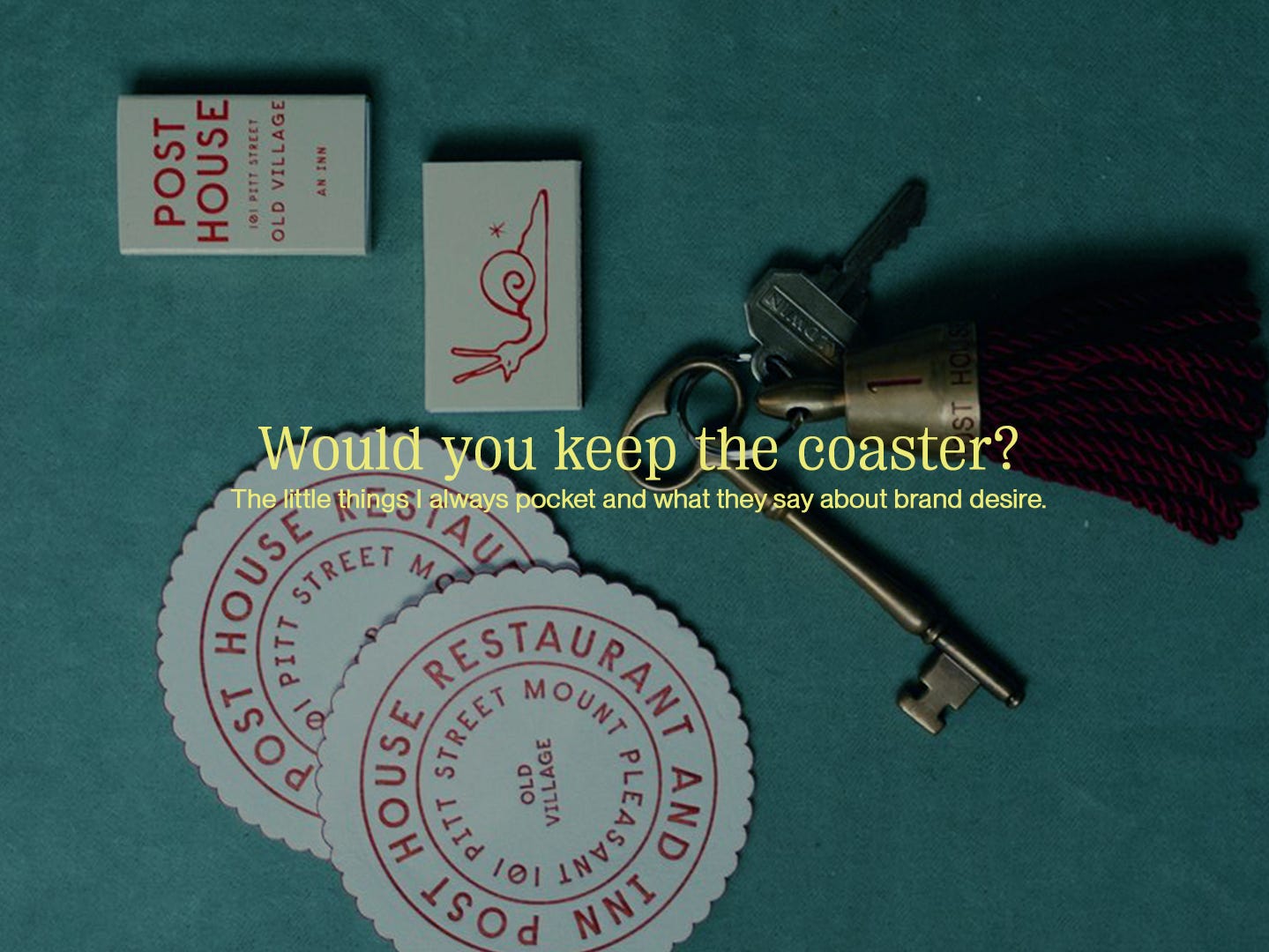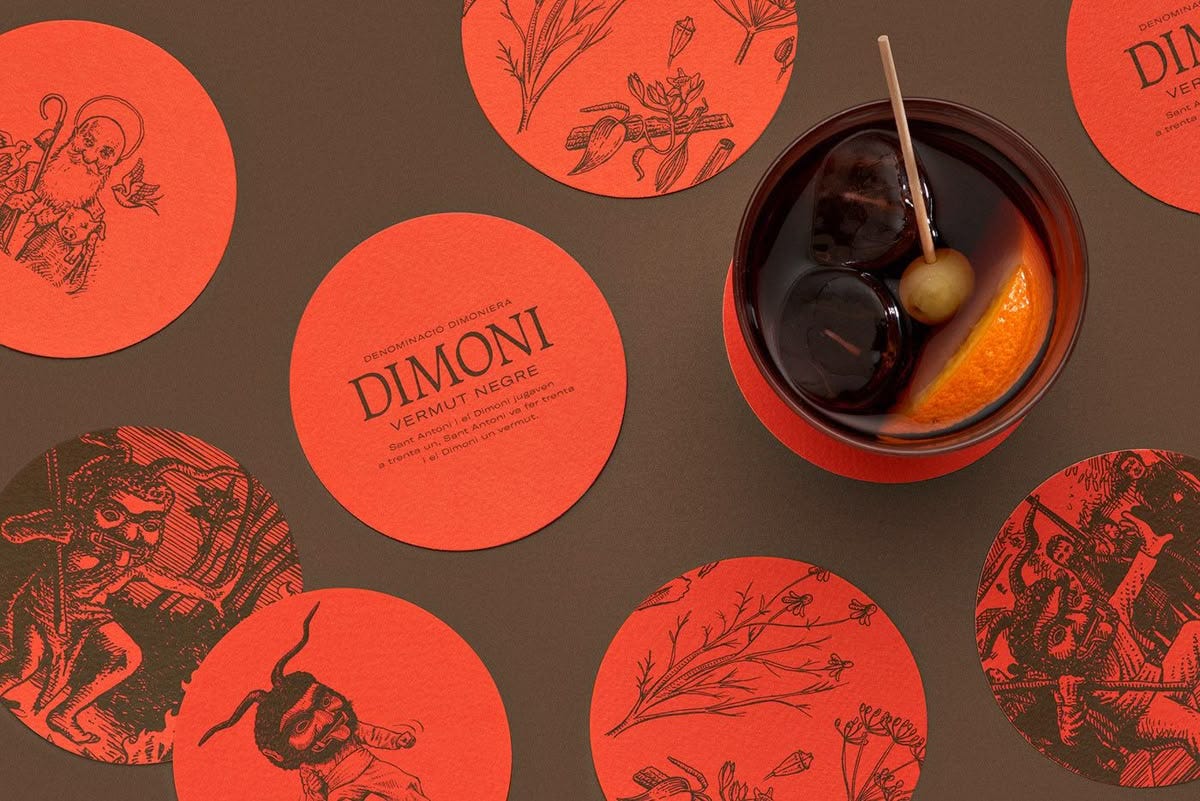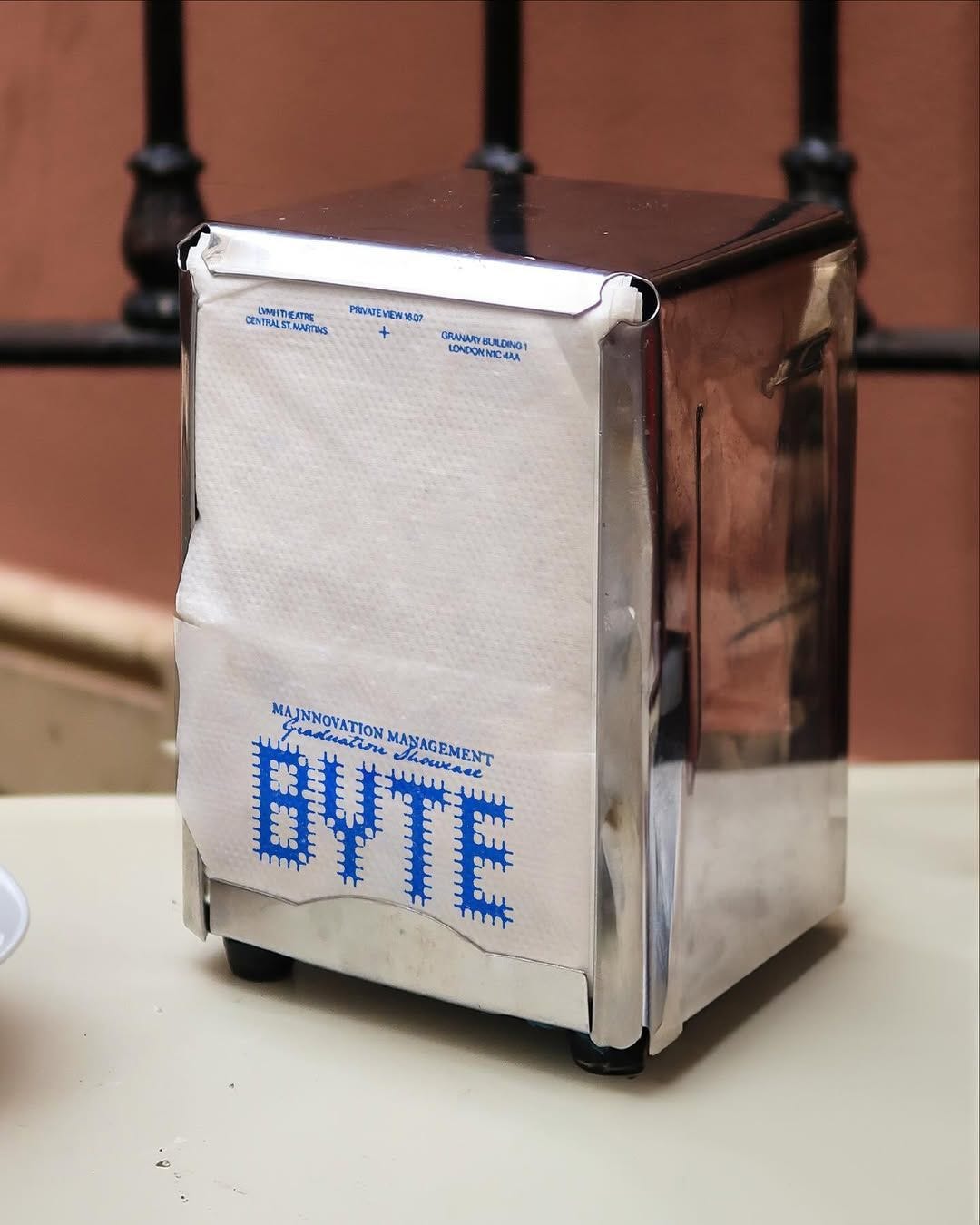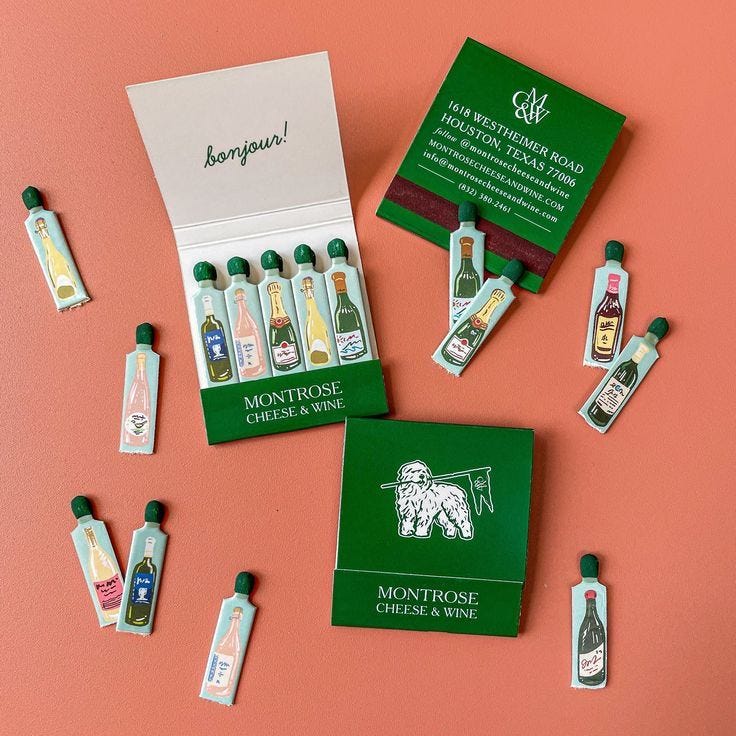Would you keep the coaster?
I definitely do. The little things I always pocket and what they say about brand desire.
I'm the kind of person who bring home, the greasy patterned tissue paper, the cool coaster, the pen to sign the addition, the super cute matchboxes, the branded postcard on the top of the counter and don’t get me started on hotel stationery. Basically everything on brand when I leave the place.
Why?
First, I keep it as a souvenir. It’s a tangible piece of paper that makes me smile and remember the place, the moment, when I look at it. It’s sometimes useful like my cool pen from Agnes Restaurant that I asked the waiter if I could keep (she came back to give me a second one…) and sometimes just pretty. And that’s enough.
That’s my second reason. I’m also a bit of a creator/collator. As a brand designer, I always have an eye for the tiny details that make me love a brand or a place even more. Since it’s my job to create brand experiences, I’ve ended up with a full collection boxes inside boxes of coasters, pamphlets, matches, envelopes, notebooks. Technically, they’re samples. But if I’m honest, I love them too much to call them that. If you know what I mean.
I remember 8 years ago, in a bar in Sydney. I’ve forgotten the name, but kept the coaster. It was pink, with a blank space to write your name and a question underneath: “How are you feeling?”, you just had to tick it. These coasters were everywhere. People wrote notes, exchanged numbers. They even decorated the backyard caravan with them. That coaster became more than a coaster. It was a tool for interaction, a conversation starter, a souvenir and part of the entire experience. I still think about how many stories were scribbled on that square pink coaster. Maybe I’m overthinking it. But here I am, eight years later, still talking about it.
So it got me thinking — as a designer, and as a guest — about how brands create those moments on purpose. And how these tiny, take-home details can become a quiet but powerful way to measure brand desire.
Why These Tiny Objects Matter
Branded objects: coasters, chopstick wrappers, matchbooks, napkins, receipts might seem like extras. They are financially are, as a busy owner they have a price, but under the eyes (and hands) of a guest, they can become emotional anchors. And under the eyes of a brand designer, they’re one of the most overlooked tools in hospitality branding. Here’s what they really do:
They make the moment tactile.
You’re no longer just remembering the meal, you’re remembering the pen that signed the bill, the coaster under your drink, the patterned paper that wrapped your sandwich. These little objects have a way of lingering. And in a world where everything is digital, where we swipe more than we touch, they matter more than ever.
Branded collateral becomes a kind of resistance. A small rebellion against the frictionless. It reintroduces texture, weight, and sensation back into a world that’s increasingly flat and screen-based. These things bring you back to your senses, literally. Because here’s the truth: you can’t feel texture on Instagram. You can scroll through a restaurant’s feed, zoom in on their latest menu, watch all their reels but you still won’t know what their napkin feels like in your hand.
You won’t feel the grain of a thick postcard, the softness of embossed tissue, or the satisfying click of a good pen. But your body remembers. Touch is one of the most underrated, underdesigned senses in branding and yet, it’s the one that can make something stick. That’s the real power of texture: it leaves a residue. It lingers in your fingertips, and from there, travels to your mind.
In a scroll-first world, these physical details the thickness of the paper, the choice of stock, the weight of the takeaway bag carry more meaning than ever. These are not just design decisions. They’re memory-making tools. They shape how people feel about your brand long after the meal is over.
And when someone tucks a coaster into their bag or pockets a matchbox from the counter, it’s not just because they liked the food. It’s because they want to take a little piece of the experience with them. That’s when you know you’ve done something right. You’ve moved from function to feeling.
From service to story. From space to memory.
They keep the story going
Most hospitality experiences are built to end. You arrive, you eat, you pay, you leave. But the brands that linger are the ones that understand how to stretch that moment beyond the exit. And often, it’s the smallest things that do the heaviest lifting. A postcard you pin to your wall. A menu you fold into your journal. A receipt you keep, not for accounting but because it looked too good to throw away.
These details become bookmarks. They carry the feeling of a place long after the table’s been cleared. You might not remember the exact dish you ordered, or the name of your waiter, or what the music was playing but you remember the napkin you folded into your book. You remember the matchbox with the cheeky line. You remember the brand that made you want to keep something, not out of need, but because you felt something.
These pieces carry emotional residue. They extend the brand’s life without needing a follow-up email or an ad retarget. They create quiet echoes — moments where the memory resurfaces unexpectedly. In branding, that’s the gold. Because it means you’ve gone beyond the transaction. You’ve become a reference point. A feeling. A story worth repeating. In other words: they extend your brand’s life beyond the bill.
The Takeaway? Brand the Takeaway.
If someone is willing to steal your coaster, your napkin, your sugar packet you’ve done something right. You’ve made them feel. You’ve crossed the line from service to story. From function to affection. From transaction to intimacy.
So here’s the question again: Would they they keep the coaster?
And if not what would make them want to?
À bientôt!
Mary









I am definitely a coaster, matchstick and napkin collector. I also really love it when cafes sell their own branded espresso cups.